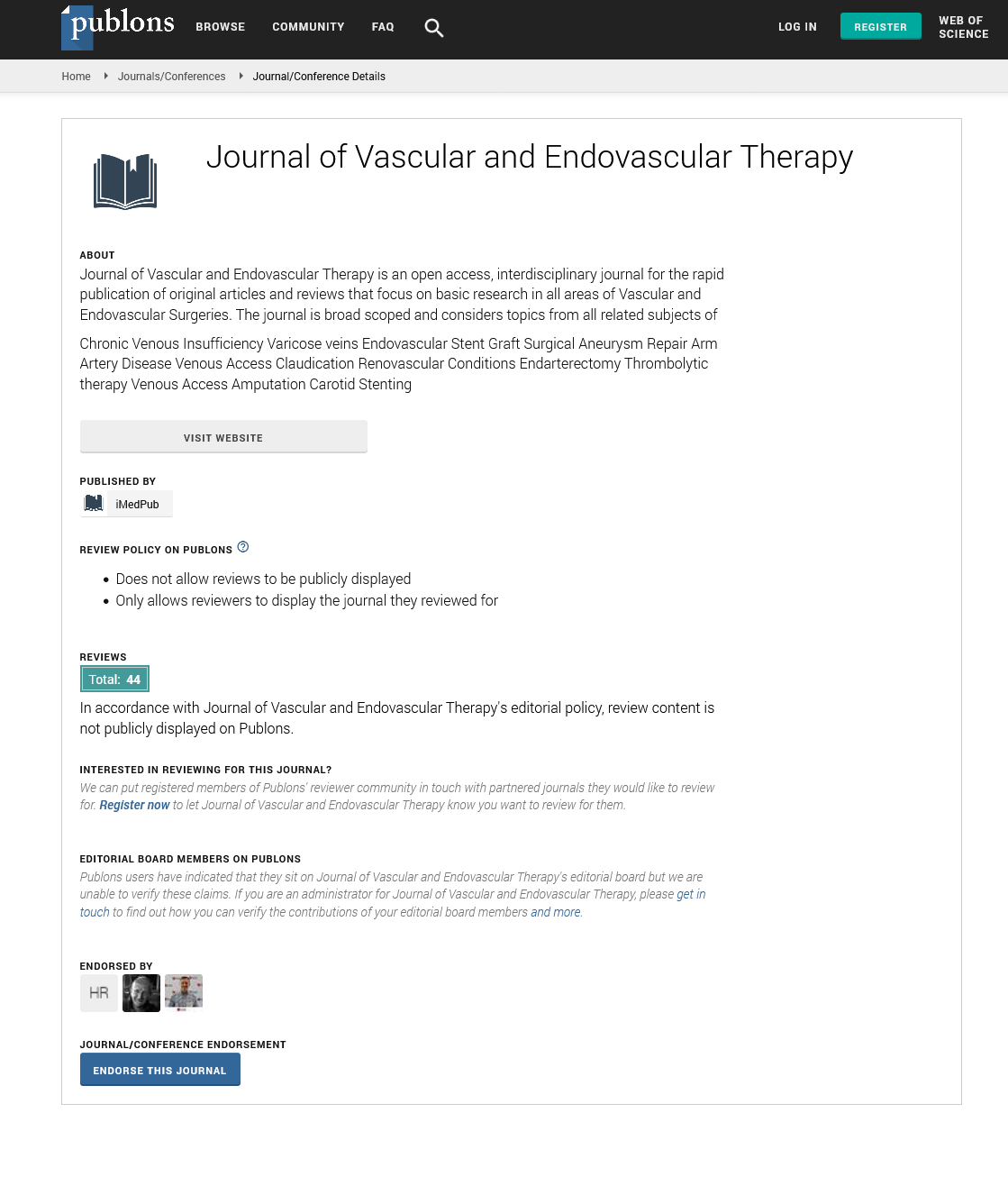Abstract
The Impact of Peripheral Artery Disease on Health Related Quality of Life: Comparison with the Impact of Coronary Artery Disease
Introduction: Peripheral artery disease is a common cardiovascular disease with high morbidity and mortality. The traditional objective parameters used to assess and guide the therapeutic interventions, poorly reflect the real effects from patients’ perspectives and their experience of living with peripheral artery disease. The importance of evaluating and improving quality of life has been recognized in several studies. Coronary artery disease is a more life-threatening cardiovascular disease. However, comparing coronary and peripheral artery disease, as to their impact on health related quality of life, has been controversial. The aim of this study was the assessment of health related quality of life in patients with peripheral artery disease and the investigation of relations and correlations with the objective criteria of illness. Moreover, the group of patients with peripheral arterial disease who were scheduled for surgical intervention was compared with the corresponding group of patients with coronary artery disease, as for the quality of life.
Methods: Symptomatic patients with peripheral artery disease (n=125) referred to the Vascular surgery service during a six month period were enrolled in this observational study of health related quality of life. Patients completed the short form-36 (SF-36) questionnaire and ankle-brachial index was measured at presentation. During the same period, patients with coronary artery disease who were scheduled for bypass surgery (n=43) were also enrolled in the study and health related quality of life was assessed using the same questionnaire.
Results: Patients with peripheral artery disease had significantly impaired health related quality of life, reporting low scores in all SF-36 domains. Markedly low they scored on the domain’s physical functioning, bodily pain, role limitations by physical problems and role limitations by emotional problems. The mean anklebrachial index was 0.57 (range, 0.30-0.90) exhibiting modest correlation with SF- 36 scores. Patients with peripheral artery disease who were scheduled for bypass surgery scored significantly (p<0.001) lower than relevant patients with coronary artery disease on the domains physical functioning, bodily pain and vitality.
Conclusions: Peripheral artery disease has negative impact on health related quality of life. Objective measures, as the ankle-brachial index, only partially reflect the quality of life of these patients. Compared with patients with coronary artery disease who are scheduled for surgery, patients with peripheral artery disease have similar or even greater negative impact on health related quality of life.
Author(s):
Anthos Koureas, Mamas Theodorou and Alexis A Samoutis
Abstract | Full-Text | PDF
Share this

Google scholar citation report
Citations : 177
Journal of Vascular and Endovascular Therapy received 177 citations as per google scholar report
Journal of Vascular and Endovascular Therapy peer review process verified at publons
Abstracted/Indexed in
- Google Scholar
- Open J Gate
- Publons
- Geneva Foundation for Medical Education and Research
- Secret Search Engine Labs
Open Access Journals
- Aquaculture & Veterinary Science
- Chemistry & Chemical Sciences
- Clinical Sciences
- Engineering
- General Science
- Genetics & Molecular Biology
- Health Care & Nursing
- Immunology & Microbiology
- Materials Science
- Mathematics & Physics
- Medical Sciences
- Neurology & Psychiatry
- Oncology & Cancer Science
- Pharmaceutical Sciences


